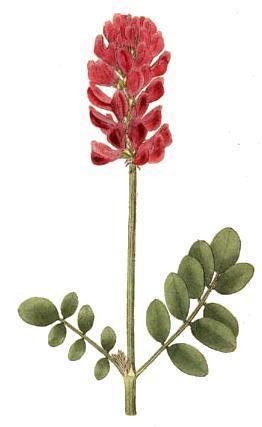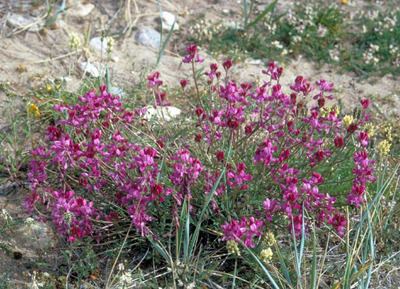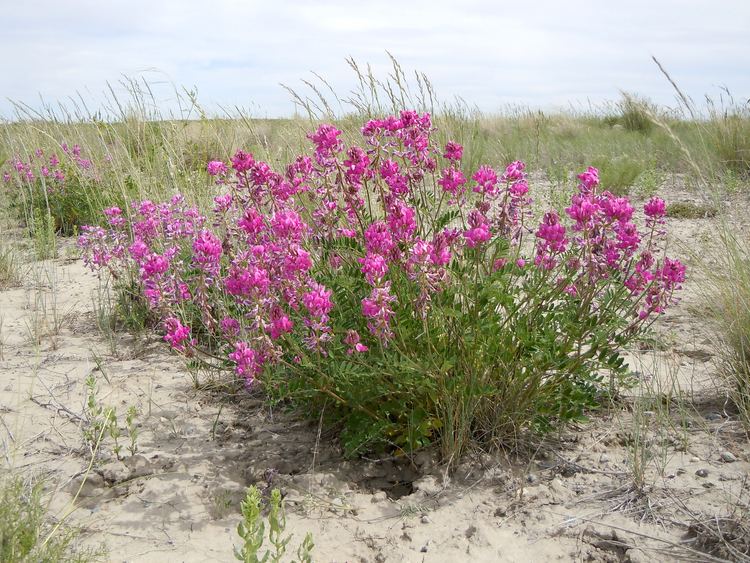Subfamily Faboideae Scientific name Hedysarum Rank Genus | ||
 | ||
Similar Legumes, Sulla coronaria, Sainfoin, Oxytropis, Desmodium | ||
Hedysarum garden plants
Hedysarum (sweetvetch) is a genus of the botanical family Fabaceae, consisting of about 309 species of annual or perennial herbs in Asia, Europe, North Africa, and North America.
Contents

Description

Species within Hedysarum genus may be herbaceous plants or deciduous shrubs. They have odd-pinnate leaves, with entire leaflets (no notches or indentations). These leaves resemble the leaves of sweet peas. The stipules may be free or connate, and stipels (secondary stipules) are absent.

The inflorescences are peduncled racemes or heads. Bracts are small, with bracteoles below the calyx, and calyx teeth subequal. The petals may be pink, purplish, yellow, or whitish. Vexillum is longer than the wings, with an obtuse keel longer or rarely shorter than the wings. Stamens are diadelphous, 9+1, and anthers uniform. Ovary is 2-8-ovuled. Fruit is a lomentum, with segments that are glabrous, pubescent, bristly, or spiny.
Uses

Hedysarum species are used as food plants by the larvae of some Lepidoptera (moth and butterfly) species including Coleophora accordella. Some species, such as Hedysarum alpinum also known as Alpine Sweetvetch or Wild Potato, were eaten by the Inuit to help ward off the effects of scurvy due to it being rich in vitamin C, containing about 21 mg/100g. Charles Darwin also called the telegraph plant a Hedysarum.

In his book Into the Wild, Jon Krakauer incorrectly speculates that Christopher McCandless died from eating seeds of H. alpinum, which Krakauer further speculates to contain swainsonine. This theory was later debunked by experts in the field of botany. Krakauer subsequently postulated that these seeds were stored wet in a plastic bag, which may have created a toxic by-product, but again there is no evidence to support this claim.
Krakauer was later validated, to a certain extent. Krakauer explains that he recently came across the research of a writer, Ronald Hamilton, who had concluded that a neurotoxin, known as ODAP, in the wild potato seed was responsible for a degenerative disease known as lathyrism. In August 2013 Krakauer sent a modest sample of the seeds for testing, discovering that they contained ".394 per cent beta-ODAP by weight, a concentration well within the levels known to cause lathyrism in humans." Krakauer concludes that "Had McCandless’s guidebook to edible plants warned that Hedysarum alpinum seeds contain a neurotoxin that can cause paralysis, he probably would have walked out of the wild in late August with no more difficulty than when he walked into the wild in April, and would still be alive today."
Wildlife
The roots are a major food for grizzly bears.
